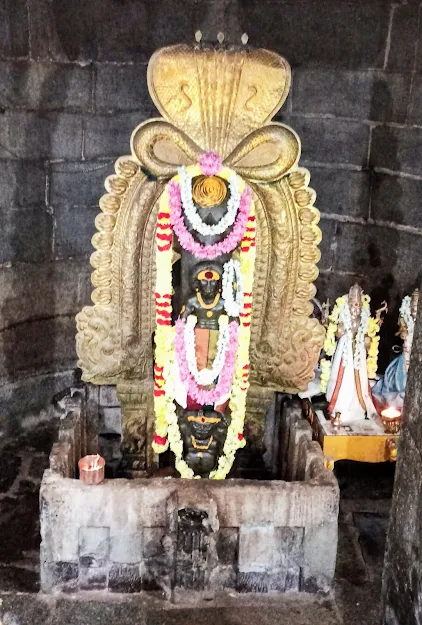SHIVA – THE OLDEST LINGAM - THE INDUS CONNECTION
 |
| LINGA WITH SHIVA |
The PARASHURAMESHWAR Temple structure at Gudimallam, and the sculpture of the LINGAM looks similar to the workshop of the MELUHHA hieroglyph. The Meluhha’s were probably the inhabitants of the Indus Valley Civilization, currently in Baloch - Pakistan. They Traded in the modern Indian and Afghanistan region along with trade connections to MESOPOTAMIAN SUMER in Iraq.
 |
| SHIVA - THE SMILING HUNTER |
The remarkable feature of the sculptural motifs on the temple, look like a continuity of Meluhha hieroglyphs: safflower (Safforn), elephant, ram, tabor or drum, goblin (gaNa metaphored by 'elephant legs' on the Gudimallam sculpture), oxhide ingot on the jewellery of the sculpture (depicted on Indus writing of MOHENJADARO tablet m1429 showing oxhide ingot cargo on a boat).
 |
| SAFFRON FLOWER MOTIF ON THE TEMPLE VIMANA |
Did the builders of the Temple, know about the Meluhha connection, as they seem to have made the Saffron flower motif on the Vimana of the Temple at least a 1000 year later to the Lingam.
The hieroglyphs found in Gudimallam sculpture are related to metalwork and are a reaffirmation that a smithy( blacksmith workshop) was a temple. It is not mere coincidence that Rigveda refers to Bharatam Janam validating their identity as metal casters: bharat 'alloy of copper, pewter, tin' (Marathi); bharatiyo 'metal casters' (Gujarati). The gloss bharata 'metal caster' was rendered by the hieroglyph barad 'bull'. Thus, Meluhha metalworkers were Bharatam Janam blessed by Rishi Viswamitra in the Rigveda. So, does Gudimallam evidence a continuity of SIVA-LINGA tradition of SARASWATI-SINDHU civilization
 |
Gudimallam sculpture (5 ft. tall) has motifs of oxhide ingots on ornaments worn by the hunter carrying a battle axe and identified REBUS ( picture puzzle) by a ram. |
The glyphs of the civilization are abiding records of such metaphors, glyphs such as the SWASTIKA, the dotted-circle, the endless knot, and the branches of a tree or twigs from a branch, the horns. The glyphs are an artisan’s way of representing meaning, representing life-activities unraveling the nature of material phenomena – of the minerals which could be moulded into metals and artifacts of a civilization.
The bracelet on the right shoulder of SHIVA also contains images
of an oxhide ingot, apart from the three oxhide ingots identified by
Mr.TA.Gopinatha Rao as shown on the figure detailing ornaments in the Gudimallam
sculpture.
| Stumpy Dwarf or Goblin, GaNa. Similar to the Mathura Kubera yaksha or KUPIRO YAKHO of Bharhut. |
A reference to 'elephant' legs of the dwarf on the Lingam is instructive. This is a clear hieroglyph metaphor indicating that the sculpture is a representation of an ironsmith or blacksmith. Because, hieroglyph ibha 'elephant' rebus: ib 'iron'. Because, the oxhide ingots are shown as ornaments of the hunter, kiraaTa; the ingots are of the same shape as those shown in Cyprus artifacts and also on the Mohenjodaro tablet showing a boat with cargo of oxhide ingots. The hunter on the sculptur is a continuum of the Meluhha tradition of sea faring merchants delivering oxhide ingots in maritime trade on the Tin Route.
 |
| SEVVEDIKA LINGAM ( Seven Sided) |
The shaft of the linga is seven-sided indicating seven tongues of sacred fire or seven phases of the effulgent sun (indicated by riding a chariot drawn by seven horses). Could be a representation of AGNIRUDRA?
 |
| Parashurameshwara Lingam |
Some of the Copper coins of the 3rd Century BC obtained in Ujjain,contain figures which resemble the Linga of Gudimallam. A 1st century sculpture in the Mathura Museum also contains a figure resembling the Gudimallam Shiva Linga."
 |
| The view from the Window with Nandin, The lingam is planted in lower precinct. |
Comments
Post a Comment